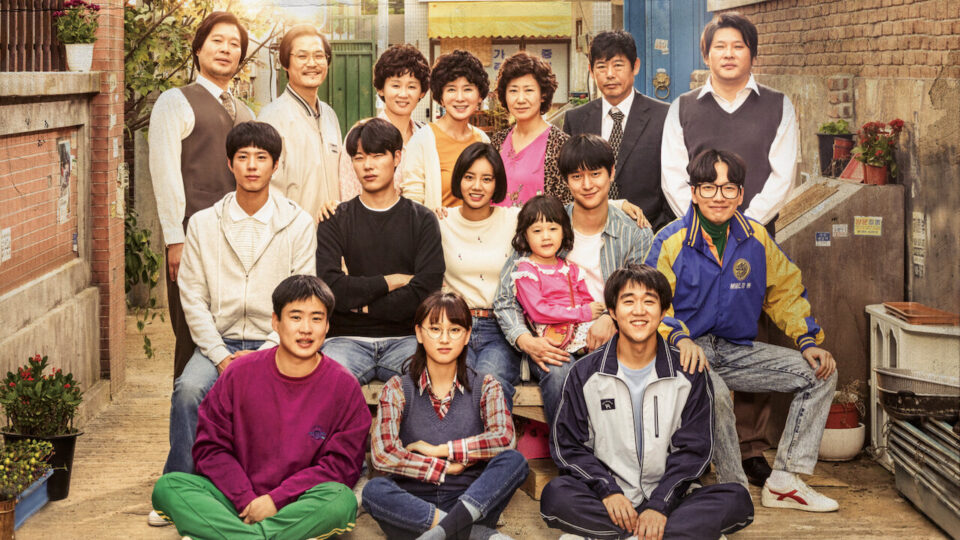K-Drama Flashback: ‘Reply 1988’
Stepping back in time with the classic ‘Reply 1988,’ with its captivating story, endearing characters, and nostalgic charm. This series is a must-watch for any K-drama fan
Reply 1988 (2015) is a departure from the typical coming-of-age story in its exploration of the fondness and highs and lows of friendship, love, and family bonds through the lives of five families from Seoul’s Ssangmundong neighborhood in 1988. Its best quality, I think, is that as the plot thickens, it increasingly draws you to the characters and the intricate relationships that are sprouting up around them.
Reply 1988‘s central themes are the importance of community and the enduring force of family ties. The themes are universally relatable as they artfully capture the trials and troubles of people of all ages.
It also delves into the concepts of sacrifice and devotion, highlighting how people rally around each other in times of joy and sorrow. The bonds forged in Reply 1988 serve as a poignant reminder of the power of empathy and unity in the face of adversity.
Reply 1988 highlights key Confucian ideas: the need for education, self-cultivation, love for family, and interpersonal relationships. In maximizing one’s potential, we also see how essential education and diligence are. It discusses the challenges parents face in providing their children with the best education possible and recognizes the value of education for achieving personal and societal welfare.
A bittersweet emotional rollercoaster associated with first love is also dealt with in the drama—its romanticism, exhilaration, and heartbreak.
Reply 1988 does a great job of taking us back to South Korea in the 1980s while also capturing the era’s fashion, sound, and style. It’s a window into the country’s socioeconomic state, revealing the hopes and dreams of its people.
Reply 1988 recalls the spirit of a bygone era with its painstaking depiction of everyday life in Ssangmundong, inviting us to consider the flow of time and the universal values that shape our lives. A rich tapestry of nostalgia strewn across the series is made better by the busy streets, the echoes of vintage music emanating from cassette players, and the simple pleasures of socializing.
The fully realized characters in Reply 1988, each with their distinct personalities and growth arcs, are the ones that make it most memorable.
From the bright and determined Sung Deok-sun (Lee Hye-ri) and the calculating and wry Kim Jung-hwan (Ryu Jun-yeol) to the thoughtful and gifted Choi Taek (Park Bo-gum), each character grows significantly from episode to episode, touching us on an intimate level.
Deok-sun negotiates the hardships of teenage life, juggling her dreams of a better future with the realities of her current situation. Her story is a moving examination of family relationships, identity, and finding happiness in the face of uncertainty.
Taek, meanwhile, shines as a professional Go player, grappling with success and the sacrifices that come with it. He gives insight into the inner workings of a prodigy pursuing both professional and personal fulfillment through his mannerisms and moments of reflection.
Likewise, while Jung-hwan seldom expresses his emotions to others, he is a sensitive person who armors himself with sarcasm. More often than not, he feels that everything has to go for his elder brother.
Along with its leads, the secondary characters are pivotal parts of Reply 1988. They—the wacky Ryu Dong-ryong (Lee Dong-hwi), the free-spirited Sung Bo-ra (Ryu Hye-young), or the nice neighbor Sung Sun-woo (Go Kyung-pyo)—add something special to it.
As a rock of support for his friends, Sun-woo is known for his loyalty and unwavering nature. He provides sound advice and a sympathetic ear when needed. Bo-ra brings a playful vibe and serves as a constant reminder to treasure life’s small pleasures, thanks to her infectious positive attitude. Dong-ryong’s eccentricities and unrestrained imagination add a touch of whimsy to the story, frequently serving as comic relief amidst the characters’ struggles.
The art of storytelling in Reply 1988 is a masterstroke. Its character-driven narrative style creates the ideal harmony between poignant emotional beats and humorous moments. The seamless transitions between lighthearted and heartbreaking scenes make for a compelling viewing experience.
The drama allows the plot to unfold naturally while giving each character’s journey additional depth. As we follow their ups and downs, we see their gradual personal development and their relationships with each other.
It beautifully uses flashbacks, giving us a glimpse into the pasts of the characters, uncovering significant occurrences that have influenced who they are today, and foreshadowing that engenders a feeling of expectation and intrigue.
Ssangmundong’s world comes to life thanks to the attention to detail that went into capturing the era’s ambient sounds and replicating the 1980s physical setting. From the interiors of the characters’ homes to the streets of Ssangmundong, everything conveys the essence of the period. The overall vintage feeling is enhanced by its warm color scheme. The beauty and depth of the cinematography are enhanced by the way light and shadow interplay in outdoor shots.
Finally, Reply 1988 is a rewind of memories and nostalgia; it brings back the emotions of adolescence, along with all of its passions, dreams, and in-betweens that you and I have left behind. A bittersweet stroll down memory lane. You’ll be left wanting more as you immerse yourself in the drama and experience this emotional rollercoaster. If you haven’t already, watch it now.








